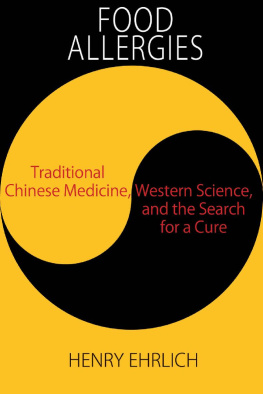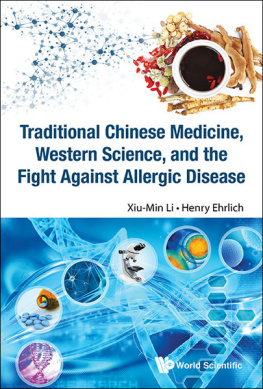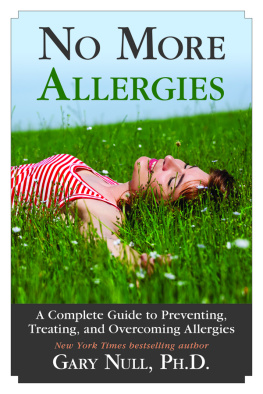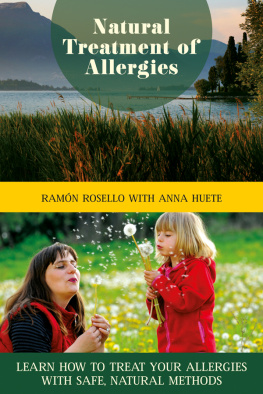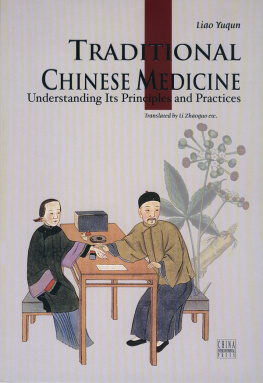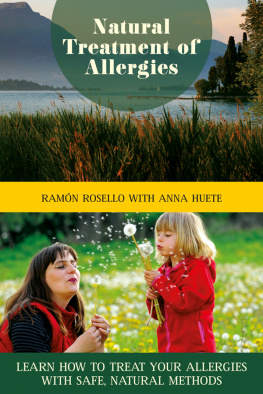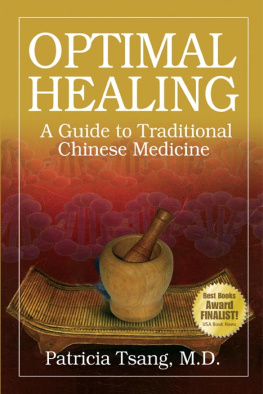
2014 Henry Ehrlich
All Rights Reserved.
No part of this publication may be reproduced, stored in a retrieval system, or transmitted, in any form or by any means, electronic, mechanical, photocopying, recording, or otherwise, without the written permission of the author.
Third Avenue Books
Cover by Christopher Lione
ISBN: 978-0-9843832-2-1
eISBN: 9780984383238
This book is printed on acid-free paper.
Printed in the United States of America
To Ella Jean
Contents
One Mother's Account
Acknowledgements
First, I must thank Dr. Xiu-Min Li of Mount Sinai School of Medicine for entrusting me with the privilege of telling the story of her work. I can't say enough about her and my esteem for her, but in the pages that follow, you will get the picture. I would also like to thank my co-authors Dr. Larry Chiaramonte and Dr. Paul Ehrlich for making me their collaborator over a long time, and imparting to me their inquisitive and patient-centered approach to medicine.
Next, Linda J. Miller, PhD; Arnold I. Levinson, MD; Anne F. Russell BSN, RN, AE-C; Jessica Martin, PhD; Mark Cullen, MD; and Adolph Singer, MD for reading the manuscript at various stages and offering suggestions, particularly on the credibility of the science, and its presentation.
Thanks, also, to Hugh Sampson, MD, who heads the Jaffe Food Allergy Institute at Mount Sinai, and his colleagues at Sinai Scott Sicherer, MD; Julie Wang, MD; Anna Nowak Wegzryn, MD; and Ying Song, MD, for talking to me about various aspects of the work. And to David Dunkin, MD and Jessica Reid-Adam, MD for discussing their very exciting research.
Dr. Renata Engler, has been especially helpful for her long-time appreciation in print and in person of Dr. Li's work, her incisive critique of the shortcomings of Western medicine in treating allergic disease, her framework for the possible incorporation of complementary and alternative medicine in American clinical practice, and for her spontaneous eloquence.
Thanks also to my old friend Tim Koranda for answering questions about Chinese culture.
Finally, I have enjoyed the support and advice of Susan Weissman, author of Feeding Eden: the Trials and Triumphs of a Food Allergy Family, the best memoir of negotiating the challenges of this epidemic I can imagine.
Dr. Li thanks the National Institutes of Health (NIH) for supporting her basic and clinic research, and FARE (Food Allergy Research and Educationformerly Food-Allergy Initiative for supporting her work into clinical trials. She is also very grateful to funds directly established at Mount Sinai School of Medicine including the Winston Wolkoff Fund for Integrative Medicine for Allergies and Wellness (Contributors: Stephanie Winston-Wolkoff and David Wolkoff, Barbara Winston, Ralph Lauren, Saks Inc.), Lisa Yu, the David L. Klein Jr. Foundation, Anna Sherbakova and Sergey Pichugov, Walter Alexander, Jonathan and Anne Garber, and Evan Fellman, Chris Burch Fund, Sean Parker Foundation, the Dugan family, and the Weissman family.
Foreword
John L. Lehr, CEO, Food Allergy Research & Education
My first awareness of the seriousness of food allergies occurred when I met my step-nephew Zach several years before I became the Chief Executive Officer of Food Allergy Research & Education (FARE), the nation's leading food allergy research, education and advocacy organization. Zach, who is now 14, is allergic to milk, egg, peanuts, tree nuts and shellfish. Soon after Zach became a part of my family, the daily challenges he had managing food allergies became apparent, as was the ever-present fear of anaphylaxis.
Since becoming CEO of FARE, I have met thousands of families struggling with the same issues and, tragically, a number of families who have lost their children to this insidious disease. Today, up to 15 million Americans are living with food allergies themselves and millions more when you include the accommodations made by their families and friends. While individuals take a number of precautions to successfully manage the disease, avoiding food allergens remains the only sure way to remain safe. Life-threatening reactions from accidental exposures are a reality, and the fact that a food allergy reaction sends someone to the emergency room every three minutes is a constant reminder of the need for a cure.
As the largest private funder of food allergy research in the world, FARE is committed to investing in science that will save lives. While food allergy research is still in the early stages, it is critical to explore innovative therapies and attract scientists from many fields and disciplines. Dr. Xiu-Min Li, a world-renowned scientist at Mount Sinai Medical Center, exemplifies those scientists.
In Henry Ehrlich's book Food Allergies: Traditional Chinese Medicine, Western Science, and the Search for a Cure, we follow Dr. Li's unique career as she investigates a potentially life-changing therapy for food allergies. The book reads like a medical thriller, as Dr. Li and her team explore an herbal formula developed from traditional Chinese medicine (TCM), and test this formula against the rigors of Western science. What ultimately follows is a deeper understanding of the complexities of human immunology, the interplay between TCM and Western medicine, and the dedication of the scientists who are working to solve this growing global health crisis. Although the author is a strict believer in laboratory and clinical research methods, and the importance of reporting research results in peer review journals, the patient stories Ehrlich presents at the end of the book offer anecdotal-but-compelling evidence of the promise of TCM as a viable therapeutic approach. Also in the thriller spirit, Ehrlich's book leads to a variety of exciting surprise endings including broader application of TCM in other diseases, explorations of possible avenues to alter the intergenerational course of allergies, and prospects for a unique vision of integrative medicine.
Well-written and easy-to-follow, this book will serve as a great reference for those interested in food allergies, clinical research, and the different pathways that may lead to a cure.
Introduction
I first met Dr. Xiu-Min Li in 2010 when I visited her office at Mount Sinai Medical Center in New York on the recommendation of Dr. Paul Ehrlich, my cousin, coauthor and cofounder of a website devoted to pediatric allergies and asthma. Paul is not normally inclined toward alternative treatments. In fact, our project with Dr. Larry Chiaramonte, another pediatric allergistthe publication of Asthma Allergies Children: A Parent's Guide simultaneously with the launch of asthmaallergieschildren.com and related venturesdeals forthrightly with the guideline medicine they both practice, although we do have a section on alternatives, which mentions Chinese medicine. Paul said he had heard Dr. Li speak and, because she was working in one of the world's top allergy-research institutions, thought it was worth trying to get Dr. Li to contribute to our site.
As a lifelong reader of the New York Times, my first acquaintance with traditional Chinese medicine (TCM) came on July 26, 1971, when the eminent columnist James Reston wrote about his emergency appendectomy while covering Henry Kissinger's visit to China. The diagnosis and surgery were accomplished by a combination of TCM and Western medicine; however, his considerable postoperative pain was relieved by acupuncture. Reading it again 41 years later, I was impressed by how vibrant TCM was both as an academic and a practical field back then. My own association with TCM was confined to the jars of dried vegetables on shelves in Chinatown stores. The idea of treating allergies with TCM sounded like rebuilding New York's infrastructure with plans for the Pyramids, the Parthenon, and St. Paul's Cathedralnot to mention any engineering marvels in China itself.
Next page
